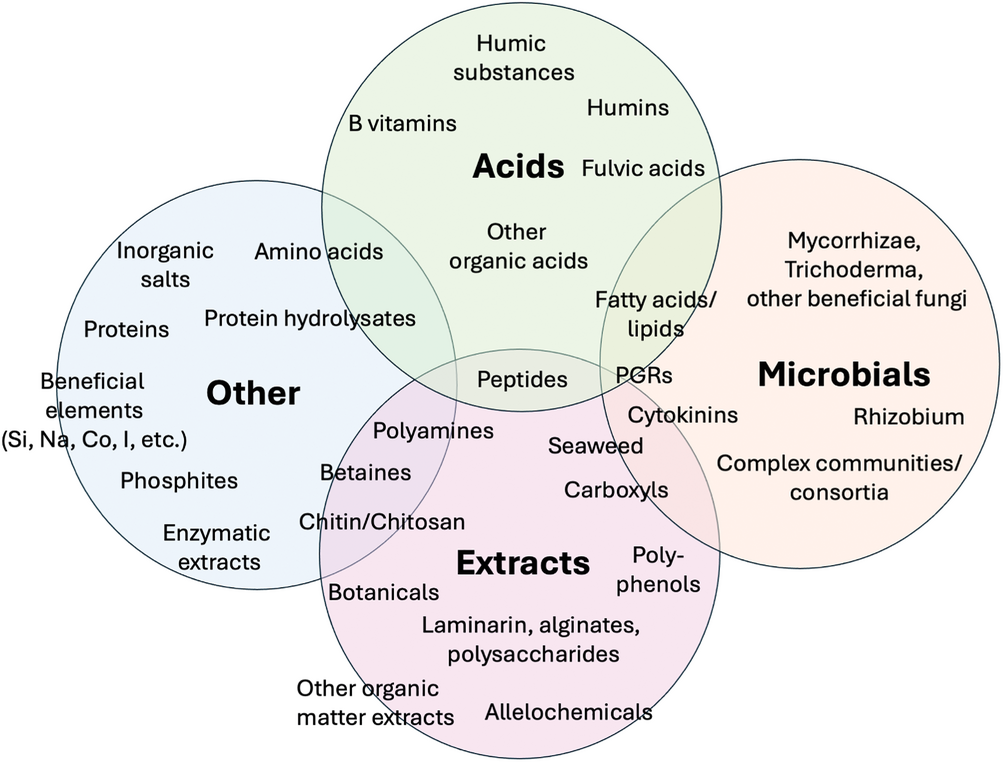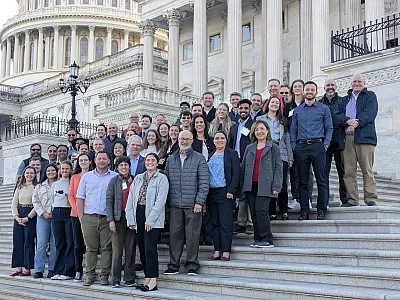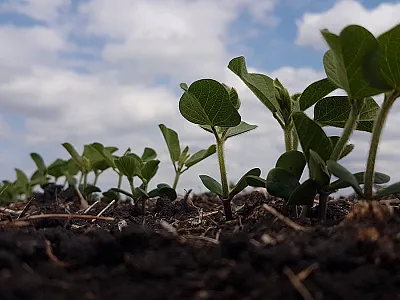Soil Fertility, Fertilizers, and Crop Nutrition: Past, Present, and Future
Part Three: A Look to the Future


The 20th century saw the development of a highly efficient nutrient industry producing affordable fertilizers that contributed greatly to increased food, feed, fiber, and fuel production for a growing global population. Plant nutrient production and use in the 21st century faces pressure to improve efficiency and outcomes. The nutrient industry has historically operated with large volumes and low margins, and has, at times, been slow to embrace innovations. However, the landscape has changed, driven by the demand for superior products, practices, and environmental stewardship. This transition marks the advent of what experts term “responsible plant nutrition” (International Fertilizer Association, 2024). This is the third and final article in a series on the past, present, and future of the North American fertilizer industry. Earn 1.5 CEUs in Nutrient Management by reading this article and taking the quiz at https://web.sciencesocieties.org/Learning-Center/Courses.
The pursuit of improved plant nutrition has sparked interest in redefining what constitutes an essential nutrient (Brown et al., 2022). The potential value of “beneficial plant nutrients” has been demonstrated in certain conditions (such as I, Si, Co, and Na). Additional elements may provide benefits in specific conditions such as Al for tea in acid soils, Co or V for N2 fixation, Se or Si for stress tolerance, or Se and Co in human nutrition. As our understanding of plant nutrient physiology deepens, there's a possibility of expanding the traditional list of 17 essential nutrients.
Another shift involves modernizing plant nutrient terms. Nomenclature implemented more than 175 years ago for molecules not occurring in fertilizer (P2O5, K2O, SO3, etc.) or in soil test results would benefit from revision to reflect our increased knowledge and understanding of chemistry. These obsolete terms frequently cause confusion.
Nitrogen
Modern N fertilizer production uses methane (CH4) to produce ammonia through the Haber–Bosch reaction (3H2 + N2 → 2NH3). This process requires considerable energy for temperatures and pressure. As a result, energy costs have a significant impact on N fertilizer prices. Methane use in ammonia synthesis creates greenhouse gas, released as CO2.
Efforts are underway to produce N fertilizer through low-carbon approaches. The widespread adoption of low-carbon fertilizer will depend on demand from the agricultural and non-agricultural sectors. In the first approach, “green ammonia” production involves generating H2 via electrolysis of water instead of using methane (2H2O → 2H2 + O2). This method uses a renewable energy source (such as wind, solar, or hydroelectric) to produce H2. The second approach, “blue ammonia,” uses traditional Haber–Bosch synthesis using methane (CH4 + H2O → CO + 3H2) but captures and stores CO2 emissions deep underground.

Low-carbon N fertilizers are a crucial step in decarbonizing fertilizer production for farmers and food chain partners to meet their sustainability goals and climate pledges. New technologies can reduce greenhouse gas emissions from N fertilizer production. Growers will need to consider site-specific factors when selecting the most sustainable N product as new technological options, such as enhanced-efficiency fertilizers and various biological solutions described below, become available.
Other innovative approaches for producing N fertilizer include on-farm, small-scale ammonia production, small-scale nitrate production using solar or wind power, and local stackable units powered by wind and solar energy. Low-carbon ammonia production increases ammonia’s appeal as a combustible fuel for transportation that will substitute for H2-based energy or fossil fuels. Expanded ammonia use for fuel will require significant expansion of global ammonia production capacity to meet demands for both fertilizer and fuel.

Phosphorus
There has been considerable discussion about the sustainability of the P fertilizer industry. Phosphorus, like all geologic minerals, has a finite global supply. Some P deposits may not be economically feasible to recover.
Discussion of the rock P outlook uses two terms that can cause confusion. Reserves refer to the amount of mineral that can be mined with prevailing or potentially feasible technology using current economic conditions. Resources are the P deposits that are technically recoverable using current technology but not necessarily under present economic conditions. Mineral resources are always larger than reserves.
Current rock P resources are estimated at 65 billion tons P2O5 (Argus/IFA, 2023). Reserves are 21 billion tons P2O5, which represents the technically and economically recoverable P. This reserve base implies a P supply lifespan of 200 to 400 years, depending on future demand. It does not account for improvements in P mining and processing, P extraction and recycling from waste streams, or enhancements in agricultural efficiency.
Potassium
Potash production capability continues to increase to meet projected global demand growth. A large majority of new production is expected to come from producers in Canada, Russia, and Belarus, along with polyhalite from the UK. African and Asian potash resources (Khorat Plateau of Thailand and Laos) are also being developed (Sun, 2024).
The U.S. Geologic Survey (2024) reports global potash resources of 250 billion tons (K2O equivalent) with the largest reserves located in Canada followed by Belarus. At current potash consumption rates (~40 million metric tonnes per year), the reserve base of 3.6 billion tons will last far into the future.
New Products and Technology
Emphasis on sustainability and efficiency creates demand for new products and practices. The introduction of 4R nutrient stewardship in 2007 was a significant milestone, but accelerated progress is needed. Critics are challenging the nutrient industry to demonstrate that 4R stewardship produces desired economic, environmental, and social outcomes.

The nutrient industry is witnessing rapid changes with numerous new products and management tools emerging. However, careful evaluation is essential as initial marketing claims may not always align with field-testing results. Products claiming to provide an easy pathway to natural, sustainable, regenerative, and healthy outcomes need to be closely examined. There is great opportunity to expand research and commercialization of new technologies and products to empower growers in making wise product choices and support the need for increased yields on existing global acreage.
Potentially disruptive or efficiency-enhancing technologies for improving plant nutrition sustainability can be divided into biological and technical approaches. These represent potential opportunities for new technology development. A quick review of some of these approaches is presented, but the authors make no claims or endorsements of the efficacy or value of any of these current or future products.
Biological Approaches to Improving Plant Nutrition Sustainability
There is much overlap among the categories of biological approaches (Box 1). Definitions in this sector vary from source to source, creating confusion and unclear differentiation among product categories. These may be materials applied to soils and/or crops directly or with fertilizer. For purposes of this article, we will use the term “biologicals” to encompass the categories of biological solutions from living organisms to non-living materials produced by biological processes. Some product types may be included in multiple categories.
Technical Approaches to Improving Plant Nutrition Sustainability
Basic fertilizer technology and products remained largely the same over the second half of the 20th century. Innovation in the 21st century is bringing a variety of new fertilizer materials and fertilizer-enhancing technologies to market (Box 2). Some technical challenges remain to be solved.
Management
The nutrient industry will continue addressing product stewardship, nutrient management practices, and user accountability. As farmers cope with a wide range of environmental conditions and ever-changing weather, improved tools, soil data analytics, and agronomic services for dealing with uncertainty will be needed. Improved long-range weather forecasting and better crop-stress monitoring will enable better management decisions, likely tapping into artificial intelligence for managing extreme complexity and variability. Improvements include wider adoption of precision agriculture tools, such as site-specific nutrient management and variable-rate fertilizer application
across individual fields. Product tracking and verification will be needed to certify that low-carbon, green N fertilizer or other sustainable practices were used to grow various crops in specific fields.
Soil health goals are becoming a greater component of management decisions as producers recognize its importance to long-term productivity. There is growing awareness throughout the value chain and consumers of the need to preserve vital soil resources that feed the global population. While promotion of soil health is important, it is not a goal by itself and must be balanced by the imperative for food production and viewed in the context of social, environmental, and economic outcomes. The site- specific impacts of various nutrients on soil health parameters are still unclear. The synthesis of soil health and regenerative agricultural practices are all aimed at better stewardship of natural resources. A deeper understanding of the complex soil microbial, physical, and chemical interactions is needed to advance nutrient stewardship.
Nutrient Efficiency
There are many ways to calculate nutrient use efficiency (NUE), but in simplest terms, NUE is the ratio of nutrient uptake or removal to nutrient inputs. Estimates of nutrient efficiency vary widely depending on the crop, location, and the time horizon considered. As an example, global estimates of P efficiency range from 16% (using the difference method) to 77% (using the balance method) depending on the underlying assumptions (Dhillon, 2017). Regardless of the definition, there is urgency to increase NUE. Modern crop genetics and plant breeding have contributed to improved nutrient use efficiency. Further progress in increasing harvest index, root health, pest resistance, stress tolerance, and other genetic attributes will lead to better nutrient management outcomes.
Box 1. Biological Approaches to Improving Plant Nutrition Sustainability
Nutrient-Uptake-Enhancing Organisms
This group of additives contains dormant or living organisms, generally bacteria, fungi, yeast, algae, or extracts from these organisms. This class includes P- and K-solubilizing bacteria and other symbiotic organisms, such as mycorrhizal fungi, that increase the availability of soil nutrients and/or enhance nutrient uptake.
Biofertilizers
Advances in understanding complex soil microbiomes have spurred the development of products and methods to manipulate biology to promote enhanced plant nutrition. These biofertilizers encompass any nutrient-rich fertilizer sourced from organic materials, such as composts, containing living organisms like those thriving in the rhizosphere or stimulating nutrient recovery, or organic additives designed to bolster root health, soil conditions, or stress resilience. The category of nutrient-uptake-enhancing organisms is also sometimes described as biofertilizer.
Nitrogen-Fixing Organisms
Rhizobial inoculants have commonly been used to facilitate symbiotic nitrogen fixation in legume crops. Enhancing biological N2 fixation in non-leguminous crops like corn, wheat, and rice has been a long-standing goal but has only recently begun to achieve commercial feasibility. Recent endeavors concentrate on leveraging free-living bacteria in two main areas: (1) the rhizosphere where bacteria utilize carbon from root exudates or soil organic matter, and (2) endophytic bacteria, which inhabit plant cells or intercellular spaces. Progress in comprehending the intricacies of these biological interactions offers hope for supplementing a portion of the crop N need.
Biostimulants
Biostimulants encompass a wide array of substances, both living and non-living, which exert influence on crop growth, quality, nutrient utilization, and stress tolerance. While they can enhance nutrient efficiency by direct or indirect means, their primary role is not to directly supply plant nutrients. This market is rapidly expanding and diverse. In 2024, the global market value for biostimulants reached an estimated $4 billion. Biostimulants are typically categorized as microbial or non-microbial products. Their application methods vary, including seed treatment, soil treatment, and foliar sprays, depending on the materials used and their mode of action.
Soil Health Promoters
The link between healthy soils (with favorable chemical, physical, and biological properties) and healthy crops has long been known. Nevertheless, recent advancements in analytical and management tools are accelerating progress. New commercial products aimed at addressing concerns like enhancing infiltration and water retention, Mitigating soil compaction, and fostering beneficial organisms in both the rhizosphere and bulk soil, are poised to enhance nutrient-use efficiency as soil health improves.

FAO et al. (2020) lists “hidden hunger,” a deficiency of critical minerals such as Zn and Fe, as a critical global health challenge. They estimate that 3 billion people lack adequate vitamins and minerals in their diets. Biofortification, increased loading of crops with these micronutrients, is suggested as a promising solution along with improving genetic capacity of food crops for greater nutrient accumulation. Similarly, more than 85% of the global human population consumes less than the recommended guideline of 3.5 g K/day (e.g., Reddin, 2023). This dietary K deficiency has major negative human health consequences. This deficit can be easily remedied by consuming a diet rich in high-K foods and by maintaining an adequate K supply in the soil. The benefit of proper plant nutrition for improving crop quality requires more attention. Using K as an example, when adequate K is provided, the harvest quality of crops such as banana, potatoes, cotton, citrus, etc. is improved. Vitamin C concentrations are enhanced with an adequate K supply, physiological disorders of citrus and tomatoes are reduced, nutraceutical compounds (such as lycopene) are increased, shelf life is extended, and disease and insect resistance are boosted (Mikkelsen, 2017).
Environmental issues
Plant nutrients have a complicated relationship in the environment. Fertilizers are clearly essential to maintaining an abundant supply of food, feed, fiber, and fuel for a growing population that requires higher yields on finite acres. Poor crop nutrition leads to soil degradation while excessive fertilization may result in negative environmental impacts that need to be addressed. The unintended impacts of plant nutrients on water and air quality remain a scientific and technical challenge requiring ongoing research. The recent imperative to address climate change has focused attention on greenhouse gas emissions released during fertilizer production and field use. Ammonia manufacturing and transportation are large sources of greenhouse gases (Scope 1 emissions). Significant amounts of greenhouse gas come from soil emissions, such as N2O lost during nitrification and/or denitrification (Scope 3 emissions). Offsite water quality impacts of N and P lost from soil have received much attention, but the solutions are not clear.

Addressing these pressing environmental issues will require a combination of fertilizer technology, advanced nutrient-management techniques, and better decision support tools. The most effective way to reduce nutrient leakage from soils is to improve nutrient use efficiency, which increases the percentage of added fertilizer recovered in the plant and reduces environmental loss. However, achieving this complex goal requires a different combination of practices for each nutrient, in each field, while coping with varying environmental conditions each year. Progress in environmental improvement must accelerate while maintaining a stable food supply.
Box 2. Technical Approaches to Improving Plant Nutrition Sustainability
Recycled/Recovered Nutrients
The loss of mineral nutrients in waste streams poses major economic and environmental challenges. Attempts at P recovery from liquid and solid waste streams has resulted in many advanced recycling technologies. Efforts to recover N largely focus on ammonia collection and concentration. The removal of K from waste streams has received far less attention. Many micronutrient fertilizers originate from by-product streams across various industries.
Organo-Mineral Fertilizers
There are growing calls for a circular economy where plant nutrients never become a “waste.” The focus is on reuse, recycling, and composting to eliminate nutrient “loss.” Currently, huge amounts of nutrients in organic materials, such as animal manure, green waste, and food residuals, are not effectively returned to cropland. If economic and technical barriers can be overcome, these organic materials and plant nutrients could be beneficially reused in agriculture.
The development of organo-mineral fertilizers, which supply valuable organic matter and have a relatively high nutrient concentration, faces challenges. These fertilizers need to be easily transportable, storable, and conveniently applied while remaining competitively priced for delivery to farms.
Nanofertilizer
Nanotechnology, an emerging technology, shows potential for efficiently delivering plant nutrients and other agricultural chemicals. Nanoscale particles have unique chemical and physical properties. Nanofertilizers are produced by a physical process of grinding and milling or through a chemical synthesis process. Nanoscale particles can be applied directly to soil or foliage (directly entering through ion channels and aquaporins), be used as additives to conventional materials (such as a N inhibitor), or as a nanoscale granule coating. Continued development of advanced engineering and chemical processing holds promise for this technology, although its use for fertilizers is in early stages.
Precision Agriculture
Precision agriculture uses data collection, processing, and analysis to improve crop production management. The goal is to make farming operations more efficient and increase crop yields and quality while using inputs more effectively. Precision agriculture uses a variety of data on crop- and site-specific plant nutrition, soil health, crop status, and yields to help farmers monitor, manage, and apply nutrients more accurately. There are a wide range of precision agriculture tools that help in applying fertilizers in more precise and efficient ways to increase productivity on existing farmland while reducing nutrient losses to the environment.
Soil Testing
Soil testing was developed a century ago and still largely relies on principles that estimate the soil nutrient-supplying capacity for specific crops. While soil testing has been critical in making nutrient recommendations, there are still uncertainties that need addressing. Beyond the widely used traditional extraction techniques, alternatives such as ion exchange resins, field-based sensors, and solid-state spectroscopy will improve our predictive capability.
Tissue Testing
Tissue testing has been valuable for diagnosing plant nutrient deficiencies. Plant sensor use (e.g., satellite, aircraft, drone, tractor, and handheld platforms) allows nearly instantaneous analysis of sufficiency or deficiency and holds potential for rapid progress. Interpretation of sensor data remains a barrier although artificial intelligence for chemical analysis and data interpretation will speed adoption.
Soil Biological Testing and Soil Health Indices
Study of soil biology and soil health is leading to new analytical methods to enumerate soil organisms and their relationships to plant nutrition and agronomic practices. Better understanding of these relationships will help growers target practices that improve soil health for sustainable results.
These methods are in early stages and need more work to calibrate lab tests to field results, allowing practical interpretation for products or practice recommendations, but early findings are promising.
Several soil health indices are being adopted, but their link to plant nutrition, fertilizer recommendations, and nutrient efficiency are often not clear.
Summary
Plant nutrient production and use in the 21st century is undergoing major changes, driven by the imperative for sustainability and technological advancements. A growing global population puts increasing pressure on natural resources, and there is greater urgency for enhancing nutrient use efficiency, minimizing environmental impacts, and adopting innovative approaches. The industry is witnessing a gradual shift where specific fertilization practices aim to optimize nutrient delivery based on soil and crop needs, reduce loss, and maximize yields.
Additionally, there is a surge in the development of novel fertilizers, including biofertilizers, nanofertilizers, and enhanced-efficiency fertilizers, which aim to improve nutrient uptake, reduce nutrient losses, and promote soil health. These advancements, coupled with efforts to harness organic waste streams and embrace circular economy principles, are shaping the future of the fertilizer industry towards a more sustainable and resilient agricultural system.
References
Argus/IFA. (2023). Phosphate rock resources and reserves. https://bit.ly/3RdQU3i
Brown, P., Amaral, D., Park, M., Schmidt, J., & Gaudin, A. (2020). Plant biostimulants and their influence on nutrient use efficiency (NUE).
Burleigh Dodds Science Publishing. http://dx.doi.org/10.19103/AS.2020.0068.13
Brown, P.H., Zhao, F.-J., & Dobermann, A. (2022). What is a plant nutrient? Changing definitions to advance science and innovation in plant nutrition. Plant and Soil, 476, 11–23. https://doi.org/10.1007/s11104-021-05171-w
Davis, D. (2009). Declining fruit and vegetable nutrient composition: What is the evidence? HortScience, 44, 15–19.
Dhillon, J., Torres, G., Driver, E., Figueiredo, B., & Raun, W.R. (2017). Phosphorus use efficiency in cereal crops. https://doi.org/10.2134/agronj2016.08.0483
Ewing, M., Israel, B., Jutt, T., Talebian, H., & Stepanik, L. (2020). Hydrogen on the path to net-zero emissions. Pembina Institute. https://www.pembina.org/reports/hydrogen-climate-primer-2020.pdf
FAO, IFAD, UNICEF, WFP, and WHO. (2020). The state of food security and nutrition in the world 2020. Transforming food systems for affordable healthy diets.https://doi.org/10.4060/ca9692en
International Fertilizer Association. (2024). Scientific Panel on Responsible Plant Nutrition.https://www.fertilizer.org/science/sprpn/
Marles, R. (2017). Mineral nutrient composition of vegetables, fruits and grains: The context of reports of apparent historical declines. Journal of Food Composition and Analysis, 56, 93–103. http://dx.doi.org/10.1016/j.jfca.2016.11.012
Mikkelsen, R. (2017). The importance of potassium management for horticultural crops. Indian Journal of Fertilisers, 13(11), 82–86. https://f4hu.short.gy/DKGj5f
Reddin C., Ferguson, J., Murphy, R., Clarke, A., Judge, C., Griffith, V., & O’Donnell, M.J. (2023). Global mean potassium intake: a systematic review and Bayesian meta-analysis. European Journal of Nutrition, 62, 2027–2037. https://doi.org/10.1007/s00394-023-03128-6
Sun, H. (2024). A review of the geological characteristics and resource potential analysis of potash deposits in Africa. Journal of African Earth Sciences, 213, 105226. https://doi.org/10.1016/j.jafrearsci.2024.105226
Tonelli, D., Rosa, L., Gabrielli, P., Parente, A., & Contino, F. (2024). Cost-competitive decentralized ammonia fertilizer production can increase food security. Nature Food, 5, 469–479. https://doi.org/10.1038/s43016-024-00979-y
U.S. Geological Survey. (2024). USGS mineral commodity summary: Potash. https://pubs.usgs.gov/periodicals/mcs2024/mcs2024-potash.pdf
Self-Study CEU Quiz
Earn 1.5 CEUs in Nutrient Management by taking the quiz for the article at https://web.sciencesocieties.org/Learning-Center/Courses. For your convenience, the quiz is printed below. The CEU can be purchased individually, or you can access as part of your Online Classroom Subscription.
- Which of the changes or developments described by the authors may best characterize the 21st-century fertilizer industry?
- Rapid technological change.
- Emphasis on environmental stewardship.
- Soil health outcomes.
- All of the above.
- Which of the following was NOT given as a reason for interest in redefining the term “essential plant nutrient”?
- Recognition of nutrient importance in human nutrition.
- Discovery of new roles of some plant nutrients.
- Potential value of “beneficial plant nutrients.”
- Greater understanding of nutrient physiology.
- Which of these ammonia synthesis methods does NOT use methane as a feedstock?
- Haber-Bosch.
- Green ammonia.
- Blue ammonia.
- All of the above use methane.
- Which of the following time periods would best describe phosphorus supply reserves for current usage rates?
- 50 years.
- 100 years.
- 300 years.
- 1000 years.
- Which countries or regions are expected to supply the majority of new potash production?
- Canada and Russia.
- UK and Russia.
- Russia and Africa.
- Belarus and Asia.
- In referring to mineral supplies for the future, such as phosphorus and potassium, which of the following is a true statement?
- Reserves > resources.
- Resources > reserves.
- Resources = reserves.
- None of the above.
- The term “biofertilizers” may refer to
- Living organisms that supply nutrients or improve nutrient availability.
- Nutrient-rich organic materials.
- Organic materials that enhance soil health.
- All of the above.
- The primary mode of action of biostimulants is to supply essential plant nutrients.
- True.
- False.
- Which of the following statements is most true about the biological approaches described to improve nutrient use efficiency?
- Clearly differentiated product categories with well-known modes of action.
- Only living organisms that directly add nutrients to soils or crops.
- Many diverse products in several overlapping categories.
- Well-defined ingredients that stimulate soil biology by known modes of action.
- Nanofertilizers are a developing technology that utilizes
- Small-celled organisms to produce nutrients.
- Combinations of multiple nutrients in a homogenous package.
- Fertilizers made from recycled materials.
- Nutrient materials of extremely small particle size.
- Recovery and recycling of nutrients from organic waste streams is challenged by
- Low nutrient content of the resulting finished fertilizer materials.
- High processing and transportation costs.
- Inconvenient transportation and application logistics.
- All of the above.
- Use of precision agriculture techniques attempts to improve nutrient use efficiency by
- Management uniformity across fields.
- Collection and analysis of site-specific data.
- Monitoring soil biological properties.
- Both a and c.
- Which of these nutrients would be considered the greatest contributor to greenhouse gas emissions from agriculture?
- Nitrogen.
- Phosphorus.
- Potassium.
- Sulfur.
- The term “biofortification” has been used to describe
- Fertilizing soil microorganisms to promote microbial activity.
- Adding biological materials to crops to promote plant health.
- Fertilizing crops with specific nutrients to enhance food nutritional quality.
- Applying soil microbial amendments to promote soil health.
- Which of the following is a primary driver in the search for new fertilizer and nutrient management technology?
- Improving nutrient use efficiency.
- Reducing nutrient loss to the environment.
- Improving crop productivity and food quality.
- All of the above.
Text © . The authors. CC BY-NC-ND 4.0. Except where otherwise noted, images are subject to copyright. Any reuse without express permission from the copyright owner is prohibited.










